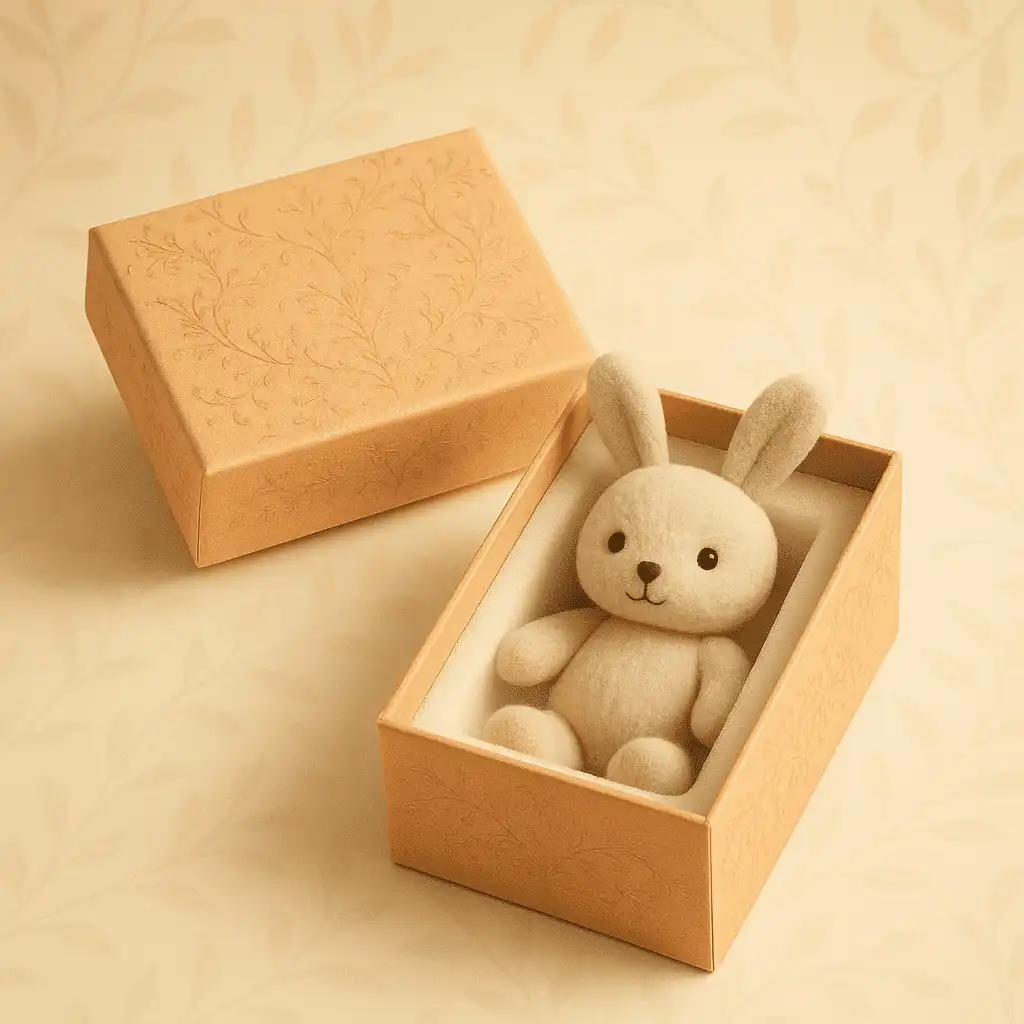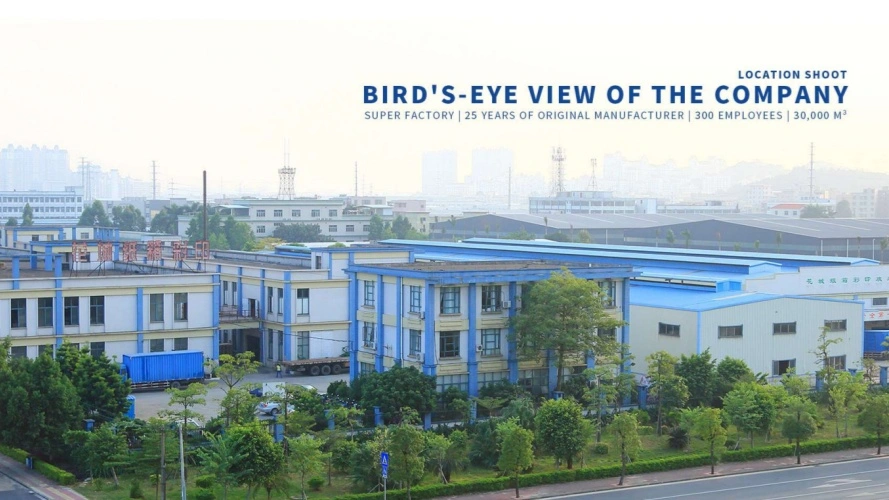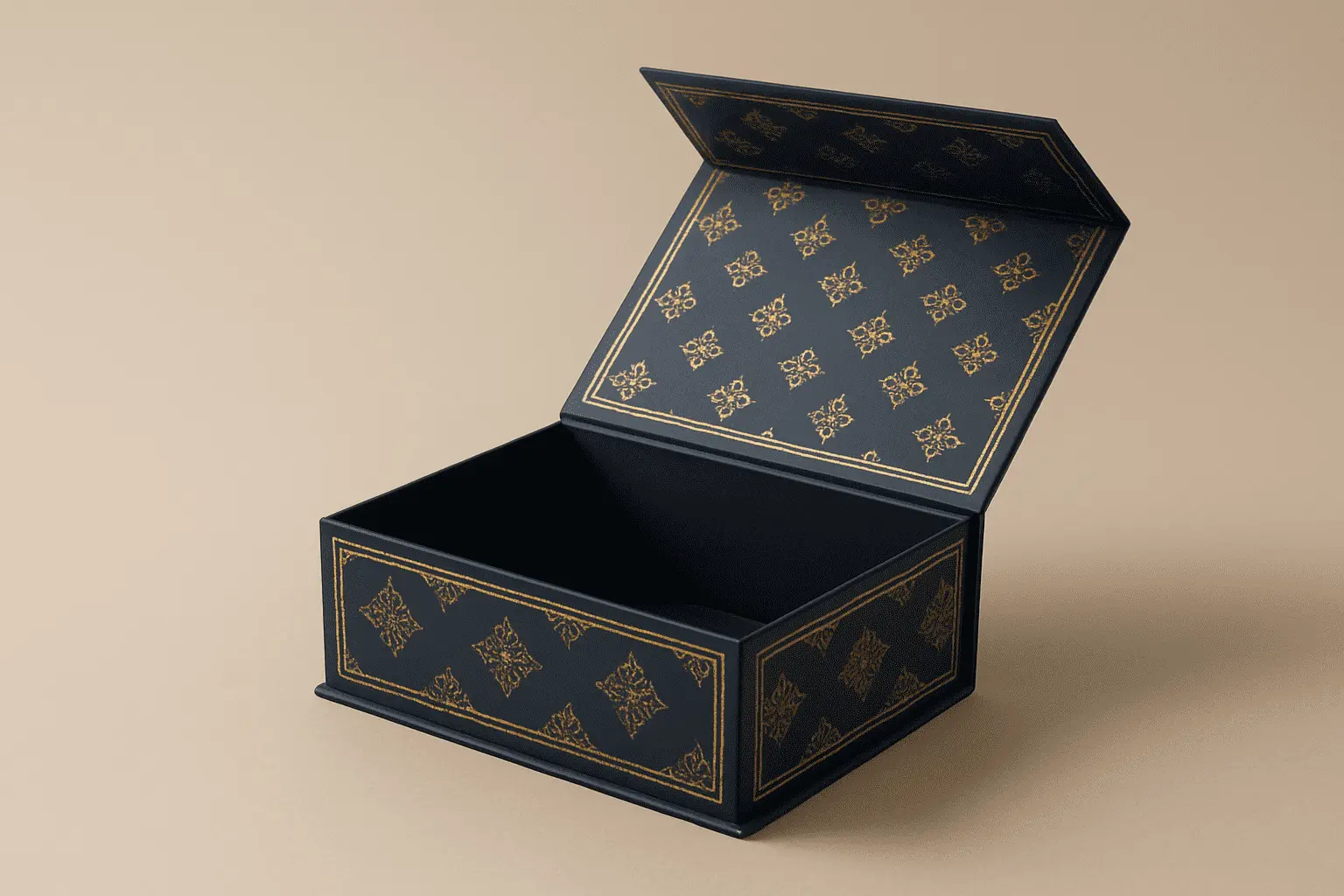A Comprehensive Guide to Folding Carton Packaging and Popular Styles
In today's competitive marketplace, packaging serves as the critical bridge between product and consumer, making folding carton packaging an essential element of successful brand strategy. This comprehensive guide explores the intricate world of folding carton packaging, examining the various styles, manufacturing processes, and design considerations that make these solutions indispensable across industries. From traditional paperboard constructions to advanced cardboard gift box, modern packaging technology has evolved to meet diverse market demands while maintaining cost-effectiveness and environmental responsibility. Understanding the nuances of folding carton design, material selection, and production techniques enables businesses to make informed decisions that enhance product protection, brand visibility, and consumer experience.

Understanding Folding Carton Materials and Construction
Material Science Behind Effective Packaging Solutions
The foundation of exceptional folding carton packaging lies in understanding the diverse materials available and their specific applications. cardboard gift box represent one of the most versatile and widely adopted solutions in the packaging industry, offering superior strength-to-weight ratios compared to traditional solid fiber alternatives. The construction of these materials involves multiple layers of paper, including an outer liner, inner liner, and fluted medium that creates the characteristic corrugated structure. This engineering approach provides excellent cushioning properties, making cardboard gift box ideal for protecting fragile items during shipping and handling. Modern manufacturing processes have refined these materials to achieve specific performance characteristics, including moisture resistance, compression strength, and print receptivity. The selection of appropriate basis weights, typically ranging from 125 to 350 GSM for paperboard applications, directly impacts the structural integrity and visual appeal of the finished package. Advanced coating technologies, including aqueous and UV-curable formulations, enhance the surface properties of cardboard gift box, enabling superior print quality and providing barriers against environmental factors.
Structural Engineering and Design Principles
The structural design of folding cartons requires careful consideration of multiple engineering factors to ensure optimal performance throughout the product lifecycle. cardboard gift box benefit from sophisticated die-cutting techniques that create precise fold lines, perforations, and structural elements without compromising material integrity. The scoring depth and direction play crucial roles in determining how cleanly the carton folds and maintains its shape under various stress conditions. Edge crush strength (ECT) and burst strength measurements provide quantitative assessments of packaging performance, with typical cardboard gift box achieving ECT values between 32-71 pounds per inch depending on the flute configuration. Modern CAD software enables packaging engineers to simulate stress distribution patterns and optimize structural elements before physical prototyping, reducing development time and material waste. The integration of locking mechanisms, such as tuck tabs, friction locks, and adhesive closures, ensures secure package integrity while maintaining ease of assembly for end users. Professional packaging design considers the entire supply chain, from automated filling equipment compatibility to retail display requirements, ensuring that cardboard gift box perform effectively at every stage.
Advanced Manufacturing Processes and Quality Control
Contemporary folding carton production utilizes state-of-the-art manufacturing technologies that deliver consistent quality and precise dimensional tolerances. High-speed converting equipment, including rotary die-cutters and folder-gluers, can process cardboard gift box at rates exceeding 500 linear feet per minute while maintaining registration accuracy within ±1mm. Digital printing technologies have revolutionized the customization capabilities for folding cartons, enabling short-run productions and variable data printing applications that were previously economically unfeasible. Color management systems, including G7 certification standards, ensure consistent color reproduction across different production runs and substrates, critical for maintaining brand consistency in cardboard gift box. Quality control protocols incorporate multiple inspection points throughout the manufacturing process, including substrate quality verification, print quality assessment, structural integrity testing, and dimensional accuracy confirmation. Statistical process control (SPC) methodologies track key performance indicators and identify potential deviations before they impact product quality, ensuring that cardboard gift box meet or exceed customer specifications consistently.
Popular Folding Carton Styles and Applications
Traditional Tuck-End Designs and Variations
Tuck-end cartons represent the most recognizable and widely utilized style in folding carton packaging, offering excellent versatility for products ranging from pharmaceuticals to consumer electronics. The straight tuck end (STE) configuration provides symmetrical closure flaps that tuck into the carton body, creating a clean, professional appearance suitable for retail environments. Reverse tuck end (RTE) designs feature opposing closure directions, enhancing tamper evidence and providing additional security for sensitive products. cardboard gift box utilizing tuck-end principles benefit from the material's inherent strength properties, allowing for larger package dimensions without compromising structural integrity. The design flexibility of tuck-end styles accommodates various product shapes and sizes, with custom die-cutting capabilities enabling unique window configurations, hanging tabs, and dispensing features. Manufacturing efficiency remains high for tuck-end cardboard gift box due to the straightforward folding sequences and minimal adhesive requirements, resulting in cost-effective production for both short and long runs. Modern tuck-end designs incorporate sustainable features such as reduced material usage and simplified recycling processes, aligning with environmental responsibility initiatives while maintaining functional performance.
Auto-Bottom and Lock-Bottom Configurations
Auto-bottom and lock-bottom folding cartons provide enhanced structural stability and simplified assembly processes, making them ideal for products requiring secure base support during shipping and handling. The automatic bottom feature utilizes pre-folded and glued construction that creates a secure base when the carton sidewalls are erected, significantly reducing packaging time in production environments. Lock-bottom designs employ interlocking tabs and slots that mechanically secure the base without requiring adhesives, offering superior strength for heavier products. cardboard gift box with auto-bottom configurations excel in applications requiring rapid assembly, such as e-commerce fulfillment operations where packaging speed directly impacts operational efficiency. The engineering precision required for these designs demands tight tolerances in die-cutting and scoring operations to ensure proper tab alignment and smooth assembly action. Advanced lock-bottom cardboard gift box can support loads exceeding 50 pounds when properly designed and manufactured, making them suitable for industrial and bulk packaging applications. The self-locking mechanism provides tamper evidence capabilities while maintaining easy opening characteristics for end users, balancing security concerns with consumer convenience requirements.
Specialty Designs for Unique Applications
Innovative folding carton designs address specific market needs through creative structural solutions and material applications that extend beyond traditional packaging paradigms. Display-ready packaging (DRP) represents a significant category where cardboard gift box transform into retail merchandising tools through perforated panels, tear strips, and pop-up elements that facilitate product presentation. Multi-compartment designs utilize internal dividers and separators to organize multiple products within a single package, reducing material usage compared to individual packaging while maintaining product protection. Dispensing cartons incorporate specialized opening mechanisms, including pour spouts, dispensing windows, and portion control features that enhance user experience and product functionality. cardboard gift box designed for subscription services and direct-to-consumer shipping often feature unboxing experience elements such as sequential opening layers, printed messaging, and custom inserts that create memorable brand interactions. Temperature-sensitive applications benefit from insulated cardboard gift box that incorporate thermal barrier materials and cold chain maintenance features without significantly increasing package dimensions or weight. Sustainable specialty designs focus on material reduction, renewable content integration, and end-of-life recyclability while maintaining the protective and aesthetic properties required for premium product applications.
Design Considerations and Customization Options
Graphics Integration and Brand Enhancement
The visual impact of folding carton packaging significantly influences consumer purchasing decisions, making graphics integration a critical component of successful package design strategies. Modern printing technologies enable cardboard gift box to achieve photographic print quality through advanced color management systems and high-resolution imaging capabilities. The substrate preparation process for corrugated materials requires specialized primers and coatings to achieve optimal ink adhesion and color vibrancy, particularly important for process color applications and brand-critical color matching. Digital printing technologies offer unprecedented customization opportunities for cardboard gift box, enabling variable data printing, personalization elements, and limited edition designs that enhance brand engagement and market differentiation. Surface enhancement techniques, including UV coatings, aqueous coatings, and lamination processes, provide both aesthetic improvements and functional benefits such as moisture resistance and scuff protection. The integration of special effects printing, including metallic inks, fluorescent colors, and tactile varnishes, creates premium appearance characteristics that justify higher price points and enhance perceived product value. Brand consistency across different package sizes and product lines requires careful color management and standardization protocols that ensure cardboard gift box maintain visual coherence throughout the entire product portfolio.
Functional Features and User Experience Design
Contemporary folding carton design emphasizes user experience optimization through innovative functional features that enhance convenience, accessibility, and product interaction. Easy-open designs incorporate perforated tear strips, thumb notches, and finger lifts that eliminate the need for cutting tools while maintaining package integrity during shipping and storage. cardboard gift box benefit from these user-friendly features while providing the structural strength necessary for product protection throughout the distribution chain. Resealable closure systems, including adhesive strips, mechanical locks, and fold-over flaps, extend product freshness and enable portion control applications that add value for consumers. Child-resistant features can be integrated into cardboard gift box through complex opening sequences, push-and-turn mechanisms, and strength requirements that prevent access while remaining manageable for adults. Accessibility considerations for elderly or disabled users drive design modifications such as larger grip areas, reduced opening forces, and tactile identification elements that ensure inclusive product access. Smart packaging integration opportunities include QR codes, NFC tags, and augmented reality triggers that connect physical packages to digital experiences, creating opportunities for brand engagement, product authentication, and supply chain transparency.
Sustainability and Environmental Responsibility
Environmental consciousness drives significant innovation in folding carton design, with manufacturers and brands seeking solutions that minimize ecological impact while maintaining performance standards. cardboard gift box inherently offer sustainability advantages through their high recycled content, typically incorporating 80-90% post-consumer recycled fiber, and excellent recyclability characteristics that support circular economy principles. Material optimization strategies focus on right-sizing packages to eliminate waste while ensuring adequate protection, with advanced design software enabling precise structural analysis that prevents over-engineering. Water-based inks and coatings replace solvent-based alternatives in cardboard gift box production, reducing volatile organic compound (VOC) emissions and improving workplace safety conditions. Forest Stewardship Council (FSC) certification ensures that virgin fiber components originate from responsibly managed forests, providing third-party verification of sustainable sourcing practices. Biodegradable and compostable coating technologies offer alternatives to traditional plastic barriers while maintaining moisture and grease resistance properties required for specific applications. Life cycle assessment (LCA) methodologies evaluate the complete environmental impact of cardboard gift box from raw material extraction through end-of-life disposal, enabling data-driven decisions that optimize environmental performance across the entire product lifecycle.
Conclusion
The evolution of folding carton packaging continues to accelerate, driven by technological advances, sustainability imperatives, and changing consumer expectations that demand innovative solutions across diverse market segments. This comprehensive exploration of cardboard gift box and folding carton technologies demonstrates the sophisticated engineering and design considerations that transform simple paperboard materials into powerful marketing tools and protective packaging systems. The integration of advanced manufacturing processes, customization capabilities, and environmental responsibility principles positions folding cartons as essential components of modern packaging strategies that balance performance, aesthetics, and sustainability requirements effectively.
Partner with Industry Leaders for Your Packaging Success
With over 20 years of experience in the packaging industry, Guangzhou Fetching Color Printing & Packaging Ltd. stands as your trusted partner for innovative cardboard gift box and comprehensive packaging solutions. Our 35,000 m² manufacturing facility, staffed by 300+ skilled professionals, serves over 1,000 loyal customers worldwide with cutting-edge technology and unwavering quality commitment.
Our extensive certifications, including ISO14001-2015 Environmental Management System, ISO9001-2015 Quality Management System, FSC, and Disney certification, demonstrate our dedication to excellence and environmental responsibility. From concept to delivery, our experienced engineering team provides customized solutions that enhance your brand presence and ensure product protection throughout the supply chain.
Ready to elevate your packaging strategy with premium cardboard gift box designed specifically for your needs? Contact our packaging specialists today at public@fetchingprinting.com to discuss your project requirements and discover how our expertise can transform your packaging vision into reality.
References
1. Robertson, G.L. (2016). Food Packaging: Principles and Practice (4th ed.). CRC Press. Author explores comprehensive packaging materials science and applications across food industry sectors.
2. Kirwan, M.J., Plant, S., & Strawbridge, J.W. (2011). Plastics in Food Packaging in Food and Beverage Packaging Technology (2nd ed.). Wiley-Blackwell. Authors examine modern packaging technologies and material innovations.
3. Yam, K.L. (2009). The Wiley Encyclopedia of Packaging Technology (3rd ed.). John Wiley & Sons. Author provides comprehensive coverage of packaging engineering and design principles.
4. Selke, S.E.M., Culter, J.D., & Hernandez, R.J. (2004). Plastics Packaging: Properties, Processing, Applications, and Regulations (2nd ed.). Hanser Publications. Authors detail advanced packaging material technologies and regulatory compliance requirements.

Based on your location and order quantity, you will have the opportunity to receive a limited time free shipping promotion!

Corporate Purpose
